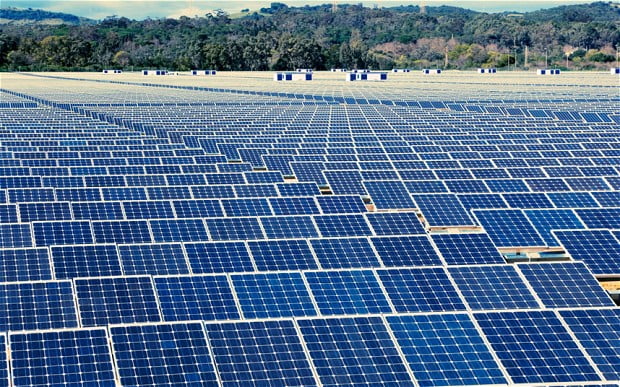
Comparison of Solar Power with the Grid Electricity
- March 17, 2016
- 0

Solar power is a renewable for of energy. The source is infinite and replenishes itself. It has been seen as a form of energy being used by hardcore environmentalists and rich people. However, this scenario has changed over the years. The technology involved in manufacturing of solar panels and Solar systems has had a drastic effect on the price of power generated.
Government help in the form of tax relief and focus of the whole world on issues like global warming has significantly improved the investment structure in this area. This has a direct impact on the cost of electricity production from the solar system. To create a global awareness about the benefits of solar energy, it is important for the government to contribute significantly to this area. Only when poor people are able to purchase solar equipment, can the dream of a truly sustainable planet be realized.
Government intervention for the use of solar power:
The federal government presently gives a 30% subsidy on the installation costs of a solar power plant. The incentives provided by respective state government on this front further brings down the initial investment required to install a solar power plant. As the market has grown considerably, there is a growth in the number of leasing companies, which lease out the solar equipment at very competitive rates.
These initiatives have certainly helped in bringing down the cost of production of solar power and brought them on par with the grid electricity. This makes it important to understand various types of subsidies presented by the government.
Sponsored Solar Parity:
In this case, the customer might be paying the same price for solar station generated electricity as that of the other utilities. However, in actual this price has been brought down by the government intervention in the form of subsidies. The 30 percent incentive on plant installation and other tax incentives offered by the government help in bringing down the overall cost of the energy being produced by the solar system. So, this government intervention makes the agreement of the third party with the customer at solar parity.
Non-Sponsored Solar Parity:
This type of solar parity is achieved without government subsidies. In states like California the cost of solar power is more or less equal or less than the grid electricity. This is possible due to the rates prevailing of the electricity grid utilities. The future scope of such a solar parity is immense, where the government subsidies can further bring down the cost of solar power generated.
What does the future hold?
There is no doubt in the fact that the future belongs to the unsubsidized solar parity. The companies are able to cut down on the cost of solar power production via innovation and best practices will ensure a sustainable future in this filed. With this not only the commercial houses would be benefitted, but also private owners and the small house owners will get cheap electricity which is pollution, smoke and noise free. Moreover, the rising shale gas and fuel cost would add to the cost of electricity production at the grid. These resources are limited and hence will lead companies to switch to alternate means of power generation.
Analyzing the facts it would be suffice to conclude that solar power is the energy of the future. It is pollution free and helps bring sustainability. Orange County solar program focusses on bringing the best practices in the solar power field from around the world. It aims to provide a framework, which would benefit not only the industry, but also the end-customers without which the dream of a pollution free world would be impossible.


















